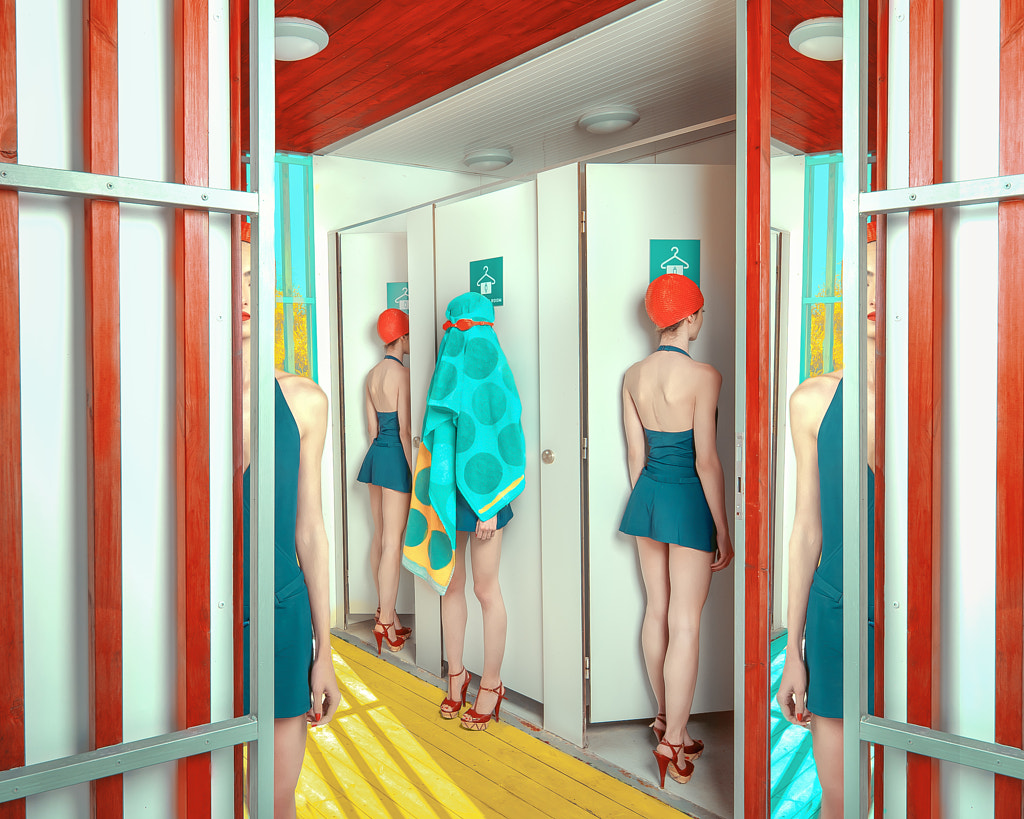The 2022 500px Global Photography Awards serves creatives working with photography and provides them a chance to showcase their skill and be rewarded for it. The second edition of the competition consisted of six categories: Technical, Storytelling, Commercial Content, Documentary, Fine Art, and Landscape. Today on the blog we’re talking with the winner of the Fine Art category, Elena Paraskeva, as she tells us more about the image.
Hi Elena, please introduce yourself.
Believe it or not, my masters was in finance, and my career in the US was first as a Director of Analytics and then as a Marketing Executive for Nestle Waters.
I am completely self-taught, never attended a single workshop, and fast-forward a decade later, my work is currently on exhibition at the European Parliament in Brussels.
I am a dedicated Adobe Instructor, teaching thousands on my process, and I’m a judge for some of the world’s most esteemed photography competitions including for the Florida Museum of Photographic Arts.
The winning image: “Keeping the Distance”
What made you gravitate to this style of photography—pushing the boundaries of representation and creating work more conceptual in nature?
I consider myself to be a complex person, and as such, I want my interaction with the viewer to take place in a more complex, contextual space where the meaning and intention is not directly available to grasp. A more involved conversation of the minds needs to happen for the unraveling of the original idea to be attained.
Can you tell us how you planned and executed the shoot for the “Keeping the Distance” image?
The particular image is part of an 8-image series that has been featured extensively in magazines around the world. The project was actually created right after our lockdowns ended. It was a surreal time if you think about it, the fear, and the need to distance ourselves was so intense, we all went through a never-before-seen level of social deprivation. The project explores society’s awkward attempts at re-integration, using humor and color.
There are so many elements within this image. Was it a challenge working with so many elements of color, props, and models?
I have a process when I create a series, and it all starts with me writing down the storyline and the message. I then scout for locations and take pictures of each frame within this location. Once I’ve honed in on the specific frames, I elaborate on the composition, writing down the poses, the props, the clothing, and, of course, the specific lighting to be used. Everything is predetermined way before the day of the shoot, nothing is left to chance. In that sense, it is easy on the day of the shoot, I know exactly what I’m going for.
Do you have a favorite image on your 500px Profile and why?
I’m always more emotionally connected to a series rather than individual images, because of the intrinsic message behind them and the time investment. But If I had to choose an image or two, I’d say the “Cubist” (I & II) because they are so representative of my conceptual style and sensibility.
All photographers have their preferred gear. What is yours, and what tools did you use to create “Keeping the Distance”?
I’m a Nikon photographer, so all my gear (camera and lenses) is Nikon. I don’t have a favorite lens to be honest, because I find that each lens has its own value depending on the type of shoot involved. If I’m doing a fine art portrait, I use a longer lens, but if I’m doing a fashion shoot, I use a wide-angle one, and I actually love the distortion.
This particular series was environmentally based and all the elements in the frame needed to be in focus, so I used a wide-angle lens mounted on my tripod. Lighting was the same for every image in the series, as I like to have light-cohesiveness, and since it was a harsh and very bright day, the goal was to use the sun as the main source, and the strobes as the secondary source that got rid of the harsh shadows. For this reason, I used large octaboxes for even coverage.
Framing and taking the shot is only a sliver of what it takes to make a strong image. The other equally important part is editing, how did you use editing tools to elevate your image?
This is very true, editing plays a significant role in my work. For this particular series, I used Photoshop to merge all the different exposures I created for each scene since I was working with a single model. I also played with color to make sure that the color-blocking I envisioned would be the same for each image. Color grading for me is the last step of the process and it is what separates a good image from a great image!
When submitting your work to the awards, how did you select from your diverse portfolio and decide on the best images? Curation can be a struggle for creatives so do you have any tips on how to be selective and intentional when it comes to submitting your work to competitions?
It all comes down to which competition you are submitting to. Research past winners to see what the competition gravitates towards. Is it realism, rawness, documentary-style photography, or very stylized, pop, colorful, or surreal imagery?
For example, the Lensculture and Sony competitions require very different imagery from say the ICA, Chromatica Awards, IPA, FAPA etc. The first competitions love and appreciate more documentary style photography and current issue-based imagery, whereas the latter award the unexpected and the more technically based.
Not on 500px yet? Sign up here to explore more impactful photography.
Submit to our Quests challenges to test your skills and win exciting prizes.
The post Meet the 500px Global Photography Awards Fine Art Category Winner appeared first on 500px.
